With the perks of owning a home comes the responsibilities of home ownership–the long list of weekend “honey do’s.” At times, homeowners take short cuts, perhaps to save time or to save money. Many times, there are no problems with this, but on occasion, saving a dime can cost a lot of dollars. One of the tasks of home maintenance that should be left to the experts is dryer vent cleaning.
Why do you need a dryer vent cleaning?
The dryer is one of the most dangerous appliances in the home. As a Certified Dryer Exhaust Technician, I receive two to three phone calls a month from people whose dryer caught on fire.
According to a recent report from the National Fire Protection Association, the leading factor contributing to dryer fires was failure to clean the dryer vent and the inside of the dryer.
Fortunately, homeowners are becoming more educated to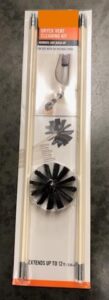 the dangers of dryer fires. According to the National Fire Protection Association, dryer vents should be cleaned once a year for the average family. More frequent dryer vent cleaning would also depend on the quantity of laundry you wash, how your dryer vent system is routed as well as how many pets you have with fur. Here are the signs that you need a dryer vent cleaned.
the dangers of dryer fires. According to the National Fire Protection Association, dryer vents should be cleaned once a year for the average family. More frequent dryer vent cleaning would also depend on the quantity of laundry you wash, how your dryer vent system is routed as well as how many pets you have with fur. Here are the signs that you need a dryer vent cleaned.
To save money from hiring a professional, some homeowners are using the dryer vent cleaning kits that you can buy from the big box hardware stores or through Amazon.
What is a dryer vent cleaning kit?
Dryer vent cleaning kits are composed of rods that are anywhere from 16″ to 24″ long as well as a four inch round brush. The kit may also include a drill bit to attach the rods to a drill for faster cleaning. The drill is not mandatory but makes the process faster, easier on the venting system, and less effort for the homeowner.
But homeowners need to know some important information before purchasing dryer vent cleaning kits.
Six problems with dryer vent cleaning kits
Here are six reasons why those DIY inexpensive dryer vent cleaning kits can result in expensive home repairs in the end.
* These kits are not intended for use with dryer vent systems with any 90 degree bends. Most dryer vent systems have multiple 90 degree bends. Although most rods in these kits are somewhat bendable and flexible, many times the rods will break or get stuck inside the vent in the attempt to go through the 90 degree bend.
* I’ve received more than a few phone calls from desperate homeowners who tried to do the dryer vent cleaning with these inferior tools and gotten the brush and rods stuck inside the system. A lot of times this happens because the homeowner reversed the drill, which detaches the rod and/or brush inside the vent. Once this happens, it is extremely difficult to retrieve the stuck brushes and rods. In many cases, the only way to resolve the issue is to tear open the wall to access the vent to remove the stuck brush and rods.
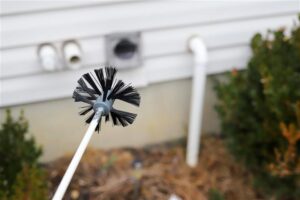
* Most dryer vents inside the walls are made from thin gauge galvanized metal. If a homeowner is attempting to go through a 90-degree bend with the rods, it is possible to puncture a hole in the thin metal vent. Even more important, as a result of the puncture, lint as well as condensation can get inside the wall cavity, creating a potential fire hazard and/or a mold issue. If it’s a gas dryer, gases are getting inside the wall cavity. With the puncture, the system is no longer pressurized and the venting will need to be replaced which can be very expensive.
* Many of the dryer vent cleaning kits only go a short distance, sometimes just twelve feet. Dryer vent systems are typically much longer than that so the brushes won’t go the full distance. We’ve seen situations where homeowners have gone into the system in one direction, then go in from the opposite direction, creating a blockage in the middle. They’ve now created a plugged-up system which is an even worse situation than before.
* If not done correctly, the brushes can catch at the vent pipe connections and cause a disconnection in the pipe. This may require opening up the walls to replace the pipe.
* Some dryer venting will go through the roof. This will require getting up on the roof where the vent exhausts out. Not all homeowners like to or should be on a tall ladder or roof to do the work on top.
How to find a Certified Dryer Exhaust Technician
To find a qualified dryer vent cleaning company, make sure to use a Certified Dryer Exhaust Technician. Go to the Chimney Safety Institute of America website, enter your zip code and it’ll give you a list of Certified Dryer Exhaust Technicians who service your zip code. Look for the logo for Certified Dryer Exhaust Technicians.
In conclusion….
These dryer vent cleaning kits may be useful for very short, straight dryer vents without any 90 degree bends. While I commend homeowners for trying to save money by doing their own dryer vent cleaning, if you don’t have the specific tools that professionals use plus the proper knowledge and training, you may create a very expensive repair in the end. Penny wise and a dollar foolish.
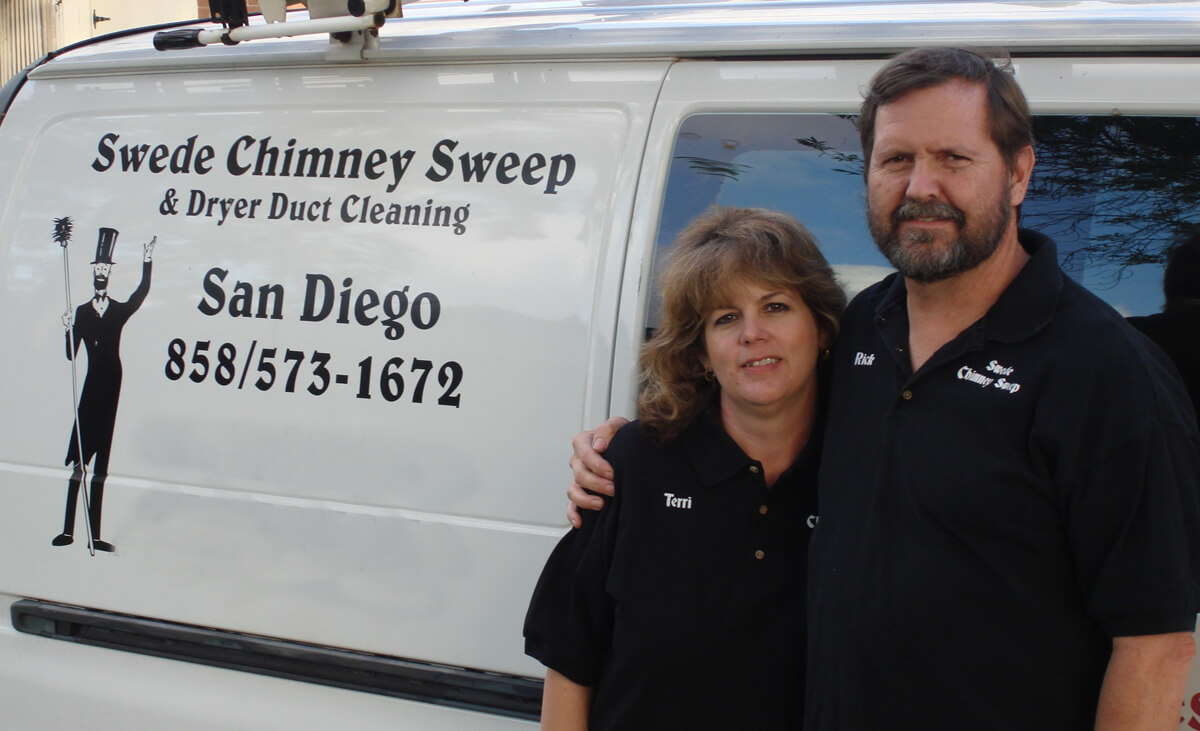
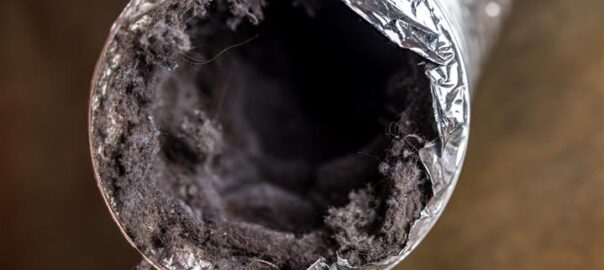
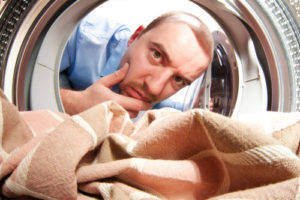 A dryer fire is much more common than you think.
A dryer fire is much more common than you think. 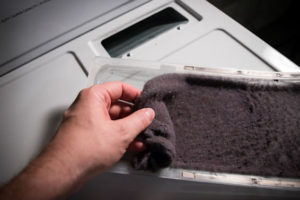 • Clean out the lint screen after every load of laundry.
• Clean out the lint screen after every load of laundry.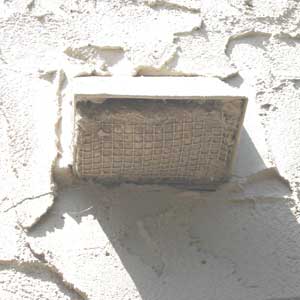 • Never have a screen where the dryer vent exhausts out. The screen will prevent animals from entering the dryer vent but the screen plugs up easily with lint. Instead, use a dryer damper or flapper.
• Never have a screen where the dryer vent exhausts out. The screen will prevent animals from entering the dryer vent but the screen plugs up easily with lint. Instead, use a dryer damper or flapper.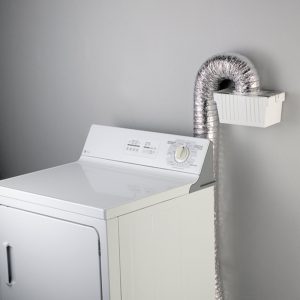
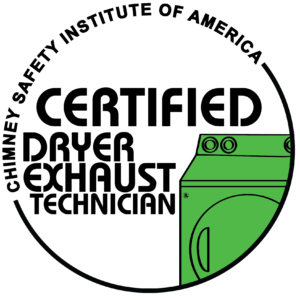 • Have your dryer vent cleaned once a year by a professional Certified Dryer Exhaust Technician. Most people don’t realize that it’s typically chimney sweeps who do dryer vent cleaning. This is because the chimney industry has developed the proper tools and equipment specifically for dryer vents. If the dryer vent is not cleaned correctly, the dryer vent can get disconnected inside the walls or completely plugged up, making for a very expensive repair.
• Have your dryer vent cleaned once a year by a professional Certified Dryer Exhaust Technician. Most people don’t realize that it’s typically chimney sweeps who do dryer vent cleaning. This is because the chimney industry has developed the proper tools and equipment specifically for dryer vents. If the dryer vent is not cleaned correctly, the dryer vent can get disconnected inside the walls or completely plugged up, making for a very expensive repair.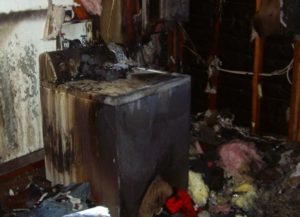 • Cleaning out your dryer vent is only one side of the issue. A dryer fire can also be caused by the clothes dryer itself. The paper and lint accumulation inside the dryer under the drum is typically where the dryer fire occurs. For that reason, hire a professional appliance technician to clean out the inside of the dryer once or twice a year, depending on your laundry habits. Simply cleaning the lint screen isn’t enough because the paper and lint can get past the lint screen and land inside the dryer. The only way to remove that lint is to open up the dryer.
• Cleaning out your dryer vent is only one side of the issue. A dryer fire can also be caused by the clothes dryer itself. The paper and lint accumulation inside the dryer under the drum is typically where the dryer fire occurs. For that reason, hire a professional appliance technician to clean out the inside of the dryer once or twice a year, depending on your laundry habits. Simply cleaning the lint screen isn’t enough because the paper and lint can get past the lint screen and land inside the dryer. The only way to remove that lint is to open up the dryer.